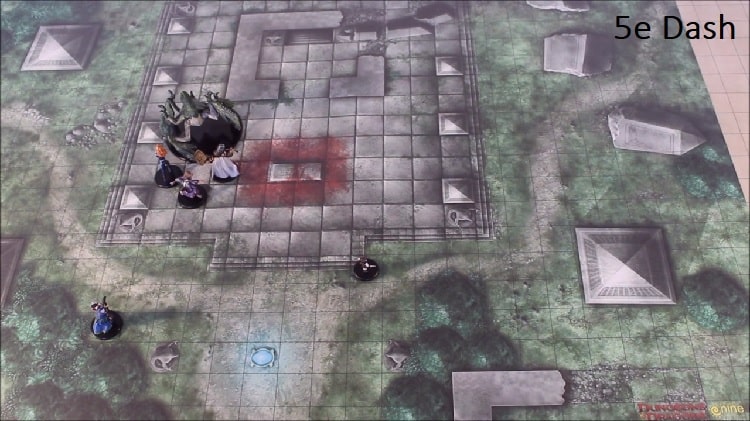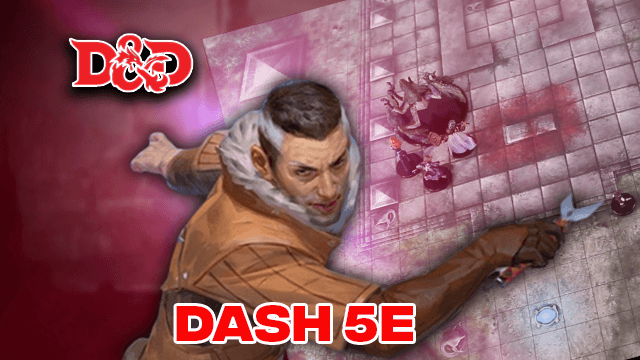5e Dash, Action 5e D&d 5th Edition (Guide) 2023
Every adjustment in your mobility alters the number of different motions by the very same amount. If your 30-foot speed gets decreased to 15 feet, you can dash 5e up to 30 feet this turn.
In a dnd, let’s say you use the 5e Dash action. For the timing, you will still get additional mobility. Following adding any modifications, the increment corresponds to your current speed. If you dash 5e at a pace of 30 feet, for instance, you can go up to 60 feet in Next Move. You get the extra rate for the timing when you’re using the 5e Dash action in D&D. Following adding any adjustments, the increase matches your pace. Any increase or decrease in your speed has the same effect on this different moving speed. During your turn, the Dash action 5e increases your mobility.
Using Dash not only manages your action, but it also allows you to go twice very far in one step. Assume you’re a monk. Can you obtain 4x activity by using Dash action 5e as your usual Action and Beat the Air as your extra act? It’s their “typical” response. Cunning action is a professional feature that allows rogues to use their motion to Dash—allowing them to Dash again in one round. The other day with regular movement and once against their bonus action. In Dungeons & Dragons, priests have the skill Step of the Breeze, which promotes the same.

Table of Contents
The Dash Movement: A Dash 5e Action’s Mechanisms
You receive extra mobility again for timing when you’re using the Dash action 5e. After adding any adjustments, the gain matches your mobility. Every modification in overall pace increases the speed of this extra motion with the same proportion.
Throughout your round effectively doubles your mobility. The other motion you obtain should indicate whether the mobility pace has lowered.
The mobility obtained from a Dash 5e could come during your round, just like expected. You can use your extra effort and thus promote a movement combo.
When Should Dash Action 5e Be Used?
Playmaking abilities
Characters who are melee-focused or have a limited range are more likely to employ defensively. To execute their mission of either doing damage or causing chaos among enemy troops, they must close the gap between themselves and the objective.
To put it another way, a writer’s average motion in 5e is 30 feet. Because species vary so widely, a faster monster will still be able to outrun the players if they so choose. Somebody will have to suck it up so either block or accelerate the progress of the opposing side.
Suppose your opponent can use the act to catch up to them. Just a ranged monster may choose to employ a Dash activity 5e defensively in this situation. It might rapidly escalate into a chase, but for now, the Dash action should suffice!
Defensively
A Dash 5e is used defensively by any hero or beast. The outcome of such an interaction is primarily determined by how well you place yourself.
A Dash 5e prevents you from striking or helping your teammates, but it would provide you with enough speed to put some distance between you and the opponent. A dash act can then use it to hurry to shelter and launch considerably better ranged strikes at its opponents.
Of obviously, there are times when your group must leave for their lives. To escape, use Dash’s actions. You can counter snipers or build rocky terrain more to reduce the speed of the adversary and secure your getaway when you’ve gained some distance from them.
The disadvantage of using a Dash 5e offensively is that even if you are all within a monster’s range, they may strike someone with an opportunity attack. Although putting some separation to yourself or their opponents may be worth the danger, this is the highest-risk defensive strategy of the three in this essay.
Suppose your hero won’t phase by one or many opportunity attacks. In that case, it’s best to perform a Dash activity instead of a Disengage. Unless you’re a person with strong AC who’s within range of just a few poor animals, for instance. It’s vital to buy extra mobility with only a Dash activity since you’re not low on health.
When Do You Want to use a Dash Action 5e For Offense?
The majority of characters who will utilize the 5e Dash action offensively are short-ranged or melee fighters. They must close the gap to themselves and accomplish their mission of either doing harm or causing havoc from among opposing forces.
In 5e, a character’s average movement speed is 30 feet. Creatures have a greater variety. As a result, if a speedier monster desires, it can always outrun the others. Everyone has to suck it up because if the opposing side’s progress is slowed or improved. It has to suck it up.
The d&d 5e Dash is a clumsy approach to get more speed. As a result, it provides awareness for such a melee character to use on their phase to approach the target. It works until they’ve successfully bridged the distance to themselves and their intended destination.
Assume your opponent is fleeing. D&D 5e Dash is a helpful way to catch up to your target. Perhaps a ranged character could choose to employ a Dash act maliciously in this situation. It can quickly escalate into such a chasing situation. Nevertheless, the Dash motion will suffice in the meanwhile!
Is it necessary for a transformed monster to use the dnd Dash action?
It’s stated plainly in the class capability description:
A flipped monster must spend its turns attempting to travel as far away from you as possible, and it is not allowed to travel within 30 feet of yourself openly. It can’t take any more responses. As a result, it could only perform the Dash activity or avoid an impact that prohibits it from performing its activity. The monster could use Dodge action 5e if there is no other way of moving.
When Should It Be Used Down the flanks?
A Dash 5e can be used tactically by any personality or beast. Appropriate placement can make all the difference in whether you succeed or fail in an interaction.
In dnd Dash prevents you from moving forward or benefiting your allies. Nevertheless, it may pass sufficiently to maintain a safe range from the assailant. The creature can also use it to hurry to protection to launch considerably more accurate ranged assaults at your opponents.
There are also times when your group feels a need to flee to protection. To escape, use Dash’s actions. Assume you’ve gained some distance from the adversary. To slow an opponent down and hasten your getaway, you can snare camp or make 5e rough terrain.
The disadvantage of using a Dashing 5e competitively is that it assumes you are within reach of a monster. Opponents might be able to assault you if they have a chance. It may be worth the risk of creating some more distance both for yourself and other opponents, but it is likely a most brutal defensive action.
Assume you’re making one or more chance attacks that won’t affect your character. A 5e Dash action is preferable to a Disengage dnd 5e. Then, as long since you’re not at low hp, it may well be advisable to acquire intriguing other motions with a Dashing 5e.
In D&D 5E, can you go faster?
“You are not faster,” he explained, “but you can move a long distance on your turn.” You can use your MOVE ACTION either to move the speed or an extra action (in the instance of such a dash 5e or Rogue). So you planned to change the rate three times in a row throughout your turn.
You’re not getting any faster, and on your turn, you’re doing the same thing three times when you might be performing three different things. Despite this, you are moving further, not faster, on the map. As a result, the nitpicking isn’t getting any faster; it’s just becoming worse. However, it is most likely some more simple.
Faqs
You gain extra mobility during the timing when you’re using the Dash action 5e. After adding any adjustments, the gain equals your pace. For instance, if you rush at 30 feet per second, you can go up to 60 feet on One Move.
You receive extra mobility for the timing when you’re using the Dash action. Following adding any modifiers, the gain matches your pace. Every increase in speed increases the rate of this extra motion according to the same proportion. Throughout your round, the Dash action nearly doubles your mobility.
Dashing is a bonus action. If your rate increased, you would still make 3 moves, but at the valuable exercise.
Yes, the Dash is a full-action 5e. It essentially doubles your pace by offering you full maximum mobility as an act, then giving it as your motion. You’re vulnerable to an opportunistic attack if you walk from your enemy’s grasp.







